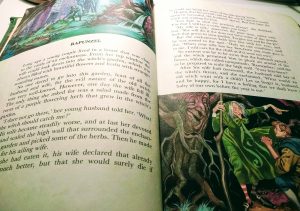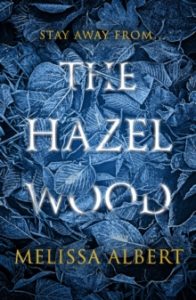If you’ve ever read real fairy tales, you’ll know the concept of a fairytale ending is far from perfect. Before Disney got his sugar-coated hands on them, they were dark, stark teaching tales – some of them with an obvious moral, others simply twisted stories that people passed around at night to scare the petticoats off each other.
 Bluebeard’s chamber was full of the corpses of his former wives, characters are blinded, torn apart by wild animals. It’s worse of course if you’re the stepmother. You could be tricked into eating the minced-up body of your own daughter, rolled down a hill in a barrel lined with nails or, if you were foolish enough to be cruel to Snow White, you could end up with your feet being forced into red-hot iron shoes and dancing yourself to death.
Bluebeard’s chamber was full of the corpses of his former wives, characters are blinded, torn apart by wild animals. It’s worse of course if you’re the stepmother. You could be tricked into eating the minced-up body of your own daughter, rolled down a hill in a barrel lined with nails or, if you were foolish enough to be cruel to Snow White, you could end up with your feet being forced into red-hot iron shoes and dancing yourself to death.
Nope, real fairy tales – not so nice.
Over the years many authors have drawn inspiration from this fairytale darkness, but Melissa Albert takes it to a new level. Her novel, The Hazel Wood, manages to out-grim the Brothers Grimm.
Seventeen-year-old Alice spent her life on the run across America with her wonderful but erratic mother, who was always bundling her into the car and hitting the road at the first sign of trouble. It’s no wonder that she becomes obsessed with her rich, eccentric grandmother, Althea Prosperine.
The Hazel Wood manages to out-grim the Brothers Grimm
Althea’s book of fairytales became a cult hit in the postwar years, enabling her to buy a huge estate north of New York, called The Hazel Wood. She since became a recluse, and her book mysteriously vanished from shelves which only feeds Alice’s fascination.
Then Alice’s mother is kidnapped and Alice herself begins to realise that the frightening creatures from her grandmother’s tales might not be fictitious after all.
creatures from her grandmother’s tales might not be fictitious after all.
The Hazel Wood’s strength is that Melissa Albert has weaved a whole host of new tales rather than relying on the ones we grew up with, so they feel oddly familiar but warped and twisted. Some of the stories are woven into the book, but others are just alluded to, with horrific names such as Twice Killed Katherine.
I’d like to have read more of the actual fairytales themselves, although it could be the author decided to keep us in the dark to add to that sense of the unknown. Perhaps there’ll be a spin-off volume later, JK Rowling style.
 It’s a hugely accomplished book for a debut author, beautifully written and atmospheric. The heroine is tough, scrappy and flawed – although her anger issues are more talked-about than experienced, it would have been fun to explore them more. I had a bit of a crush on her sidekick, Ellery Finch. I’m not at all surprised that the film rights have been sold already.
It’s a hugely accomplished book for a debut author, beautifully written and atmospheric. The heroine is tough, scrappy and flawed – although her anger issues are more talked-about than experienced, it would have been fun to explore them more. I had a bit of a crush on her sidekick, Ellery Finch. I’m not at all surprised that the film rights have been sold already.
After finishing The Hazel Wood I immediately went to my fairy tale shelf (yes, I have one) and dipped into The Annotated Brothers Grimm, edited by the incredibly knowledgeable Maria Tatar. Re-reading Tatar’s matter-of-fact tone and footnotes, plus ominous titles such as The Hand With The Knife, the link with The Hazel Wood is clear to see. Pick up a copy of both and dive in… Just don’t read them to your children.
The images are from my 1970s volume of Classic Fairy Tales, which is what started this whole thing for me in the first place.
